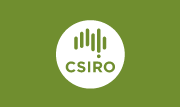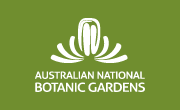2008 Report
Australia's Virtual Herbarium (AVH)
The Centre continued its role as a key contributor and developer of the AVH in terms of strategic direction, application and data contribution. In addition to the contribution of data to the AVH, CPBR and ANH staff have been involved in developing specifications for redevelopment of the AVH interface underlying data delivery protocols and in testing work done under contract at the University of Adelaide.
The new AVH will be released in October 2008. Work continues on standards to deliver other data types through the AVH including taxonomy and nomenclature (see APNI/APC below) and digital images of plant portraits, herbarium specimens and description protologues.
Planing is underway to deliver this data to the ALA when it is ready to accept it.
Herbarium Informaton Systems Committee (HISCOM)
CPBR and ANH staff are active contributors to HISCOM in strategic direction setting, and policy, standards and application development.
The Australia's Virtual Herbarium continues to be the the key project and focus of HISCOM. HISCOM is a key participant in the infrastructure development of the ALA and CPBR HISCOM participants have been working with zoological colleagues of the Fauna Collections Information Group (FCIG) on common approaches to engagement with the ALA.
Australian Biodiversity Information Facility (ABIF)
CPBR and ANH staff have been involved in contributing to the development of ABIF in terms of both design and content. During the year the decision was made to suspend active development of the site and redirect effort and support to the Atlas of Living Australia as the primary vehicle for Australia's data contribution to GBIF. This is now being managed as part of the overall ALA strategy and CPBR and ANH staff continue to be involved.
Global Biodiversity Information Facility (GBIF)
CPBR and ANH staff continue active engagement with the Global Biodiversity Information Facility and its technical working groups to ensure compatibility of data and applications. CPBR provides a vice chair of the Nodes committee and attended the GBIF governing board meeiting and symposium in Amsterdam.
Biodiversity Information Systems (TDWG)
CPBR and ANH staff continue active involvement in the Taxonomic Databases Working Group which provides the technical standards foundation for GBIF, contributing to a number of the working groups.
Standards endorsed by TDWG were implemented locally. Staff attended technical workshops in Denmark and the USA and have been actively involved in preparation for the annual TDWG conference to be held in Perth in October 2008.
International Plant Names Index (IPNI)
The CPBR and ANH are partners with Kew and Harvard in the International Plant Names Index. Application development is dependent on external resources and has slowed during the year. Data content through APNI if made available to IPNI. IPNI is a key component of the emerging 'Global Names Architecture' and projects such as the Catalogue of Life that form the nomenclatural and taxonomic backbone of global biodiversity projects such as GBIF and the Encyclopedia of Life.
Atlas of Living Australia (ALA)
The Atlas of Living Australia is a project of the Australian biological collections and taxonomy communities funded by the Australian Government's National Collaborative Research Infrastructure Strategy (NCRIS). New Director and program staff have been appointed and teh new website has been established. CPBR and ANH staff have been in regular with the ALA contact on standards and applications development and the ALA has funded a number of biodiversity informatics projects to be undertaken at the CPBR.
Taxonomy Research & Information Network (TRIN)
TRIN is a national project funded by the Commonwealth Environment Research Fund (CERF). Originally known as the CERF Taxonomy Hub, its name was changed to better reflect its distributed and national focus.
During the year information technology staff were appointed and established the hub website and wiki and research staff are bing trained in using this collaborative environment. A key technical project will be documenting the taxonomic process to see when technology might be engaged to improve efficiency; staff have been holding workshops with researchers to assess processes and business needs.
Miscellaneous
IdentifyLife: http://www.identifylife.org/ CPBR and ANH staff are participants in a global project to provide on-line identification tools and resources for all of the earth's organisms. Project design is taking place on the IdentifyLife wiki, http://wiki.identifylife.org/. The ALA, EoL and the University of Queensland are supporting partners.
APNI and the Australian Fauna Directory:
APNI and the AFD have initiated a codevelopment partnership,rogramming pooling resources to improve productivity, develop and implement compatible standards and build on the commonality of plant and animal taxonomy to create a single integrated resource fot Australian plant and animal names.
Standards for biodiversity image storage and retrieval: CPBR and ANH staff have been working with colleagues in the USA attending a workshop in Florida in image storage, documentation and retrieval standards
|
![An Australian Government Initiative [logo]](/images/austgovt_canbr_90px.gif)

![An Australian Government Initiative [logo]](/images/austgovt_canbr_90px.gif)



